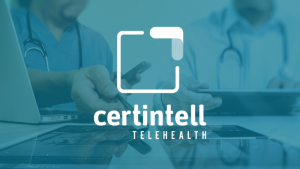Telehealth is an excellent tool for geographical accessibility, however, that is not all that needs to be considered when launching a program. Language services and assistive technology are two other big considerations.
Webinar Presenters:
- Brian Norton, Indiana Assistive Technology Act program
- Kathy Wibberly, Mid-Atlantic Telehealth Resource Center
- Ryan Elza, AARP Foundation
The use of telehealth in partnership with Community-Based Organizations’ (CBO) efforts can be transformative for underserved communities. However, speakers from part two of the Department of Health and Human Services’ (HHS) webinar series entitled “Telehealth for CBOs” argue that telehealth cannot truly succeed for communities, if it cannot service everyone. That is why accessibility in telehealth becomes important when looking at launching a program, including solutions for assistive and language barriers.
“One thing that I think is really important for community-based organizations and people to think through is to be able to think through the importance of accessibility from the onset of that decision-making. Although it might have the right tools and the right features, I really think we need to think about accessibility as a part of that initial look at what we’re looking for. So build that accessibility and the importance of that into your process for selecting tools,” Brian Norton of the Indiana Assistive Technology Act program said.
Accessibility and Assistive Technology
Assistive technology is a huge component of promoting accessibility in practice. Norton defines assistive technology’s purpose as to “ increase the efficiency or effectiveness of a person and the task that they’re doing. It decreases the degenerative nature of a disability and helps people avoid injury. But ultimately I think it all rests on – we want people to be independent. We want people to be as independent as they can in all areas and all walks of their life.”
These technologies can come at a range of price points and complexities, from braille panels to adaptive keyboards. Taking into account each patient’s unique situation when choosing and adopting technologies will help prepare for a telehealth program launch.
There are 56 state assistive technology programs, one in every state and territory, that can provide health centers and CBOs with resources on how to incorporate assistive technology into their spaces. These organizations offer device and tool demonstrations, as well as device loans for patients to try before they buy an assistive technology device. Additionally, these programs take devices other individuals no longer need and donate them to patients who may not be able to afford them. These programs further offer state financing for devices.
Language Accessibility
For some health centers or clinics, a significant portion of their patients may not speak English as a first language, or may face cultural barriers to care. This allows for things to get lost in translation.
Kathy Wibberly, of the Mid-Atlantic Telehealth Resource Center, uses Culturally and Linguistically Appropriate Services (CLAS) standards to ensure clinicians are providing culturally accessible and competent care.
“The principal standard really is to provide effective, equitable, understandable, and respectful quality care and services that are responsive to the whole diversity of health, beliefs, practices, languages, literacy, communication needs,” Wibberly said.
For the purpose of the conversation around this webinar, Wibberly noted standards five through eight on their list as follows:
- Offer language assistance to individuals who have limited English proficiency and/or other communication needs at no cost to them to facilitate timely access to all health care services.
- Inform all individuals of the availability of language assistance services clearly and in their preferred language verbally and in writing.
- Ensure the competence of individuals providing language assistance, recognizing that the use of untrained individuals and/or minors as interpreters should be avoided.
- Easy to understand print and multimedia materials and signage in the languages commonly used by the populations in the service area.
Wibberly said health systems “must take reasonable and meaningful steps to ensure access to Limited English Proficiency (LEP) persons,” however, what “meaningful” looks like is also dependent on the resources and size of a clinic as well. Standards also consider the proportion of LEP persons, the number of LEP persons needed to be served out of a total patient population. For example, if a large proportion is Latino, a clinic would undoubtedly be expected to provide access to them. But this standard also depends on size and funds. Large hospitals would be expected to provide language accessibility services free of charge, while small clinics may be given a bit more leniency.
Nuances also exist in language accessibility. Wibberly said clinicians should consider whether patients need language assistance, or just a cultural broker to be present, who can aid in cross-cultural communication.
“…Oftentimes people coming into this country do not know or understand the cultural context in healthcare. They also don’t understand the infrastructure of healthcare,” Wibberly said.
For example, Wibberly said although she grew up in the U.S., she comes from an Asian culture where it is more “acceptable” to describe mental and emotional issues from a somatic point of view. So, someone from her culture might say that they have frequent stomach aches and headaches, rather than say they are feeling anxious or depressed. Cultural brokers can help navigate this conversation.
For those that do need language assistance, Wibberly said trained healthcare interpreters are always the best option when assisting a patient. Many patients may not feel comfortable with a family member, such as a child, translating for them.
Accessibility comes in many forms and addressing them at the start of a telehealth program launch pays off in the long run, especially for the ease and comfort of your patients. Finding a partner like Certintell to help you implement accessible services can ease your organization’s stress and provide a seamless transition into an equitable health environment for your patients.
|



